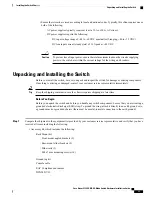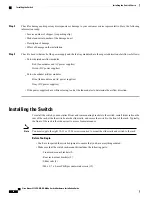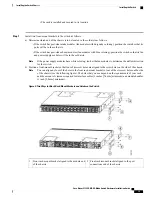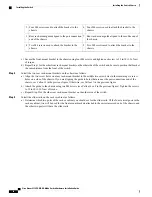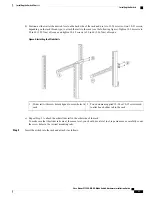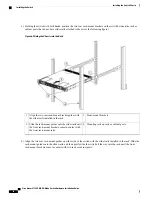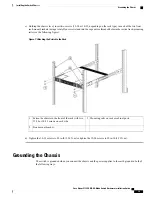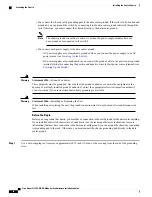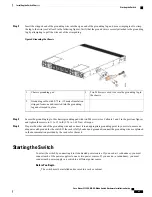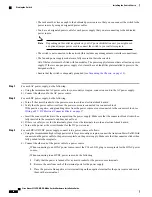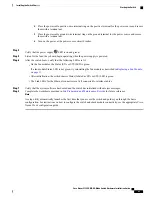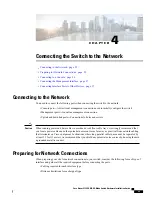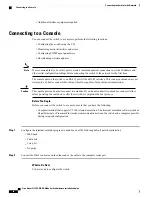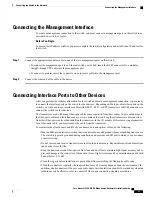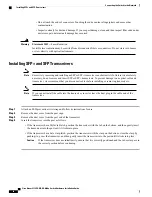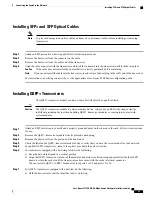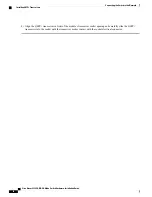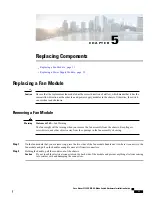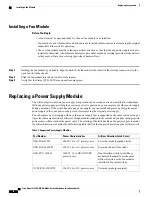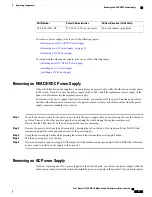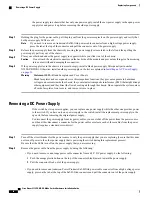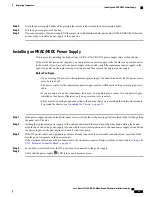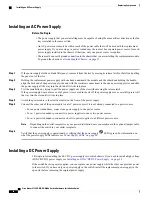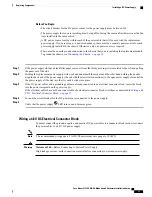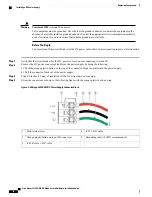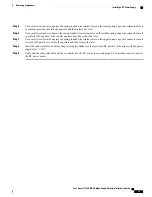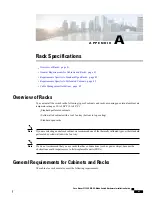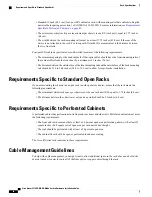
Connecting the Management Interface
To create a management connection to the switch, you must connect a management port on the switch to an
external hub, switch, or router.
Before You Begin
To prevent an IP address conflict, you must complete the initial configuration and establish an IP address for
the switch.
Step 1
Connect the appropriate modular cable to one of the two management ports on the switch.
•
To connect the management port to an Ethernet switch port or hub, insert the RJ-45 connector for a modular,
straight-through UTP cable into the management port.
•
To connect to a router, insert the connector on a crossover cable into the management port.
Step 2
Connect the other end of the cable to the device.
Connecting Interface Ports to Other Devices
After you perform the initial configuration for the switch and create a management connection, you are ready
to connect the interface ports on the switch to other devices. Depending on the types of interface ports on the
switch, you will need to use interface cables with QSFP+, SFP+, or SFP transceivers or RJ-45 connectors to
connect the switch to other devices.
The transceivers used with many fiber-optic cables come separated from their cables. To prevent damage to
the fiber-optic cables and their transceivers, we recommend that you keep these transceivers disconnected
from their fiber-optic cables when installing the transceiver in the I/O module. Before removing a transceiver
for a fiber-optic cable, you must remove the cable from the transceiver.
To maximize the effectiveness and life of your transceivers and optical cables, do the following:
•
Wear an ESD-preventative wrist strap that is connected to an earth ground whenever handling transceivers.
The switch is typically grounded during installation and provides an ESD port to which you can connect
your wrist strap.
•
Do not remove and insert a transceiver more often than is necessary. Repeated removals and insertions
can shorten its useful life.
•
Keep the transceivers and fiber-optic cables clean and dust free to maintain high signal accuracy and to
prevent damage to the connectors. Attenuation (loss of light) is increased by contamination and should
be kept below 0.35 dB.
•
Clean these parts before installation to prevent dust from scratching the fiber-optic cable ends.
•
Clean the connectors regularly; the required frequency of cleaning depends upon the environment. In
addition, clean connectors if they are exposed to dust or accidentally touched. Both wet and dry cleaning
techniques can be effective; refer to your site's fiber-optic connection cleaning procedures.
Cisco Nexus 9332PQ NX-OS-Mode Switch Hardware Installation Guide
27
Connecting the Switch to the Network
Connecting the Management Interface

